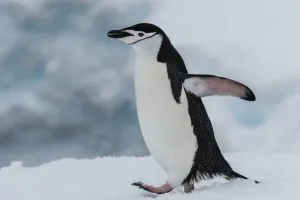Adélie penguins (Pygoscelis adeliae), are a species of penguin that inhabit the Antarctic coast. These adorable birds are known for their energetic and curious nature.
In this article, we’ll uncover some fascinating facts about Adélie penguins that will surprise and delight you, from their diet and habitat to their pebble-stealing behavior.
1. They are one of five penguin species in Antarctica
Adélie Penguins are found along the Antarctic coastline and nearby islands including South Georgia and the South Sandwich Islands. They are one of two species that make Antarctica their true home (along with Emperor penguins), however, several other species also breed there.
All penguins live in the southern hemisphere. This graphic gives an overview of where each species can be found.
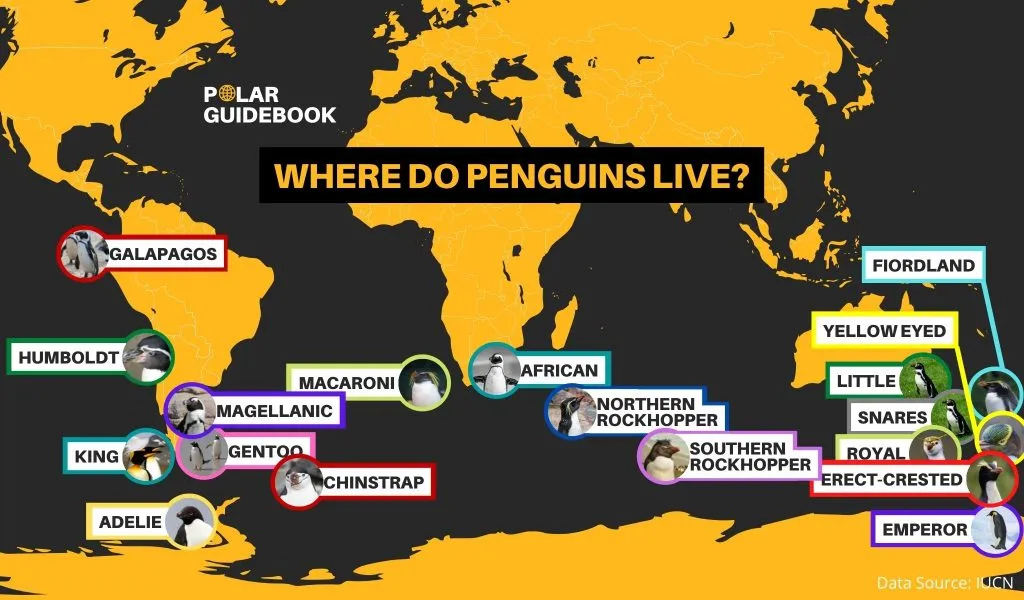
2. They are the most common penguin
With a population of around 10 million, they are the most common type of penguin and make up around one third of the global penguin population which is around 30-31 million1 (source: IUCN).
Although some penguin species are endangered, this is not the case with Adélie penguins which are listed as ‘least concern’, the lowest level of endangerment by the IUCN.
They are one of only two penguin species that are growing in number, the other being king penguins. However, specific colonies might face more threat as they are impacted by melting sea ice in Antarctica which they use as a breeding ground.
Adélie penguin colonies north of 70° S (which makes up 75% of their total population) could disappear when global temperatures reach 2°C which is likely before 20522 (source: D. Ainley, et al., Ecological Monographs, 2010). However, they may colonize new breeding habitats south of 73° S which would balance the impact.
3. Adélie penguins are named after a French explorer’s wife
The scientific name of an Adélie penguin is Pygoscelis adeliae.
Pygoscelis means ‘rump-legged’ whereas adeliae is derived from Adèle, the name of the wife of Jules Dumont d’Urville who was the French explorer that first discovered the species in 1840.
The French-claimed territory in Antarctica is also known as Adélie land for the same reason.
4. They are black and white for camouflage
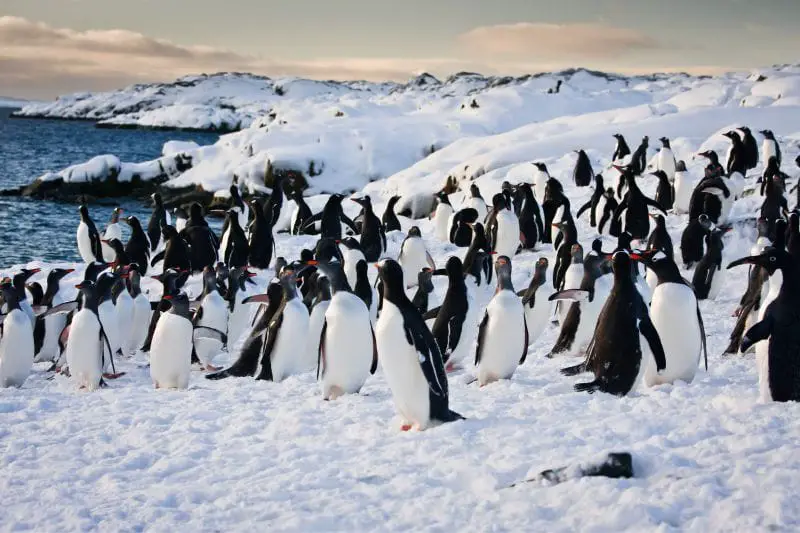
Penguins are white on their ventral (belly) and black on their dorsal (back), this is called countershading and provides better camouflage for them in water.
When seen from below, their white belly blends with the lighter surface waters above, and when seen from above, their black back creates good camouflage against the darkness of deeper waters below3 (source:H.M. Rowland, The Royal Society B Biological Sciences, Issue 364, 2008).
5. Their eyes are darker than other penguin species
Adélie penguins have dark brown eyes, far darker than many other species such as the Humboldt penguin. It is thought that the color of the iris is related to the latitude at which the penguins are found.
A darker color will absorb more radiant energy and is more likely to be found among southerly penguins where the temperatures are colder4 (source: C.J. Scholten, Marine Ornithology, Vol 27, 1999). Given their habitat in Antarctica, this is why Adélie penguins have dark eyes.
6. The lifespan of an Adélie penguin is 16-19 years in the wild
In the wild, the lifespan of an Adélie penguin is estimated to be anywhere between 16-19 years old. This is just below average for a penguin with most species living to around 20.
In captivity, a penguin’s lifespan is a little longer, typically around 30 years although there have been documented cases of penguins living to the ripe old age of 40 in captivity.
7. Adélie penguins usually dive up to 180m
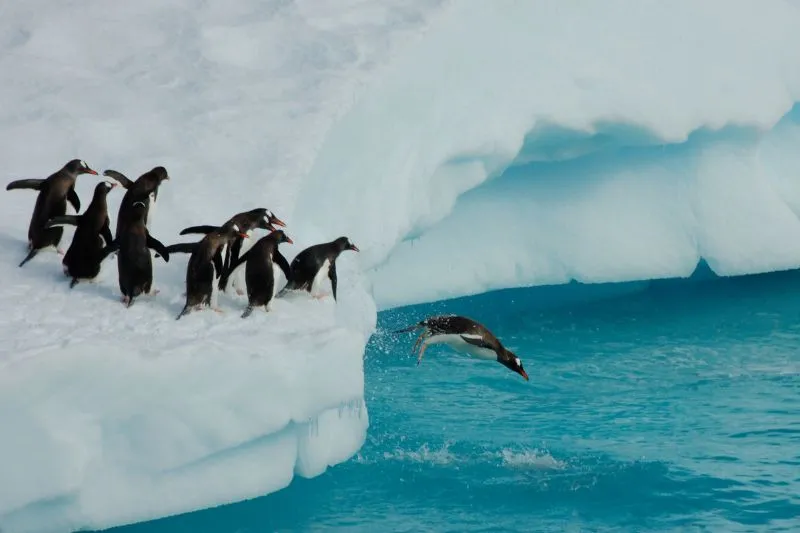
Penguins may spend around 75% of their day-to-day life in the ocean and use it as a hunting ground for catching prey5 (source: S. Moss, Do Birds Have Knees, 2016). So they must be good at diving.
Adélie penguins can dive up to 180m making them one of the deepest-diving penguins. They are able to hold their breath for long periods, with a dive typically lasting for 4 minutes6 (sources: Journal of Experimental Biology and Penguins: Natural History and Conservation).
8. Adélie penguins eat fish, squid, and crustaceans
Adélie penguins are carnivores, they mostly eat fish (such as silverfish) and crustaceans (such as krill and amphipods) but they will also eat squid7 (source: P.D. Boersma and P.G. Borboroglu, Penguins: Natural History and Conservation, 2013). This is a very typical diet of a penguin.
Penguins catch and eat their food at sea. They will catch prey as they swim upwards and swallow it whole without chewing.
9. They make nests from stones and pebbles (which may be stolen)
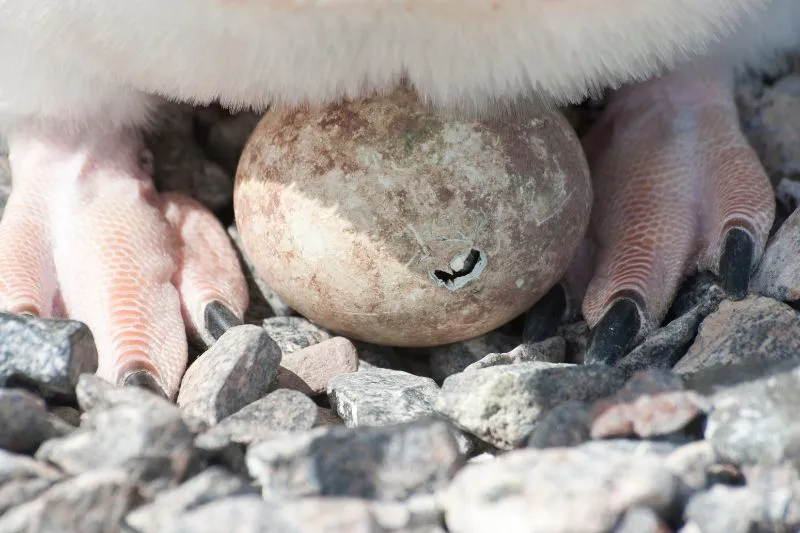
Adélie penguins breed in Antarctica. Unlike Emperor penguins who do not make nests, Adélie penguins make their nests out of stones and pebbles.
Good pebbles can be hard to come by so they are known to steal them from other penguins’ nests. This can result in fighting between birds.
The nests are usually built on slopped ground so that melting snow runs away from the nest8 (source: Australian Antarctic Program).
10. Males and females share parenting duties
Right from the outset, parenting duties are shared, starting with incubation. Males and females take it in turns incubating the eggs whilst the other parent forages for food at sea.
Once the chicks are born, they take turns guarding the chicks for the first three weeks. They typically swap duties every few days but this could be up to 4 days at a time.
Once the chicks are three weeks old, they can be left in large groups with other chicks (called a creche) while both parents forage for food.
11. They were the first penguins observed in same-sex couples
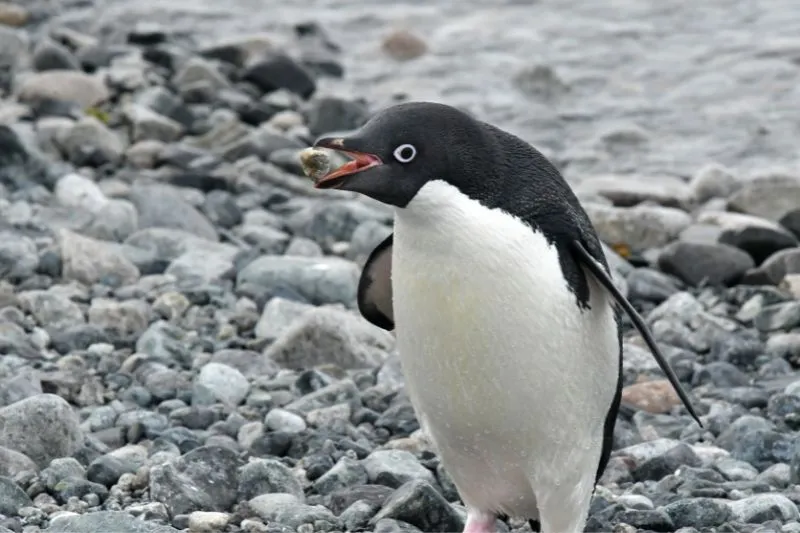
Like many other penguins, Adélie penguins have been known to engage in same-sex relationships. Dr George Murray Levick R.N first observed this behavior during the British Antarctic Expedition in 1910.
His report called ‘Sexual habits of the Adélie penguin’, which detailed how unpaired males and females engaged in homosexual behavior, was printed in 1915 but was declined for publication as it was considered too shocking at the time9 (source: D.G.D. Russell, et al, Polar Record , Vol. 48 , Issue 4 , 2012 , pp.387-393).
Same-sex couples are known to try and steal eggs from straight couples or sometimes they try to hatch rocks. This happens in the wild and in captivity. Read our full article on can penguins be gay to find out how zoo keepers are responding.
12. They are hunted by skuas, giant petrel, and leopard seals
The predators of Adélie penguins are South Polar Skuas, giant petrels, and leopard seals. Typically, it’s eggs and young chicks that are most at risk from birds, whereas seals will also attack adults.
Skuas may work in pairs to distract the parent guarding the egg or young chick with the other swooping in to take it. They also look for lost or unguarded chicks.
Leopard seals will occupy areas around the colony and look for incoming or outgoing Adélie penguins. The penguins tend to queue around nervously waiting until the area is safe before entering the water10 (source: P.D. Boersma and P.G. Borboroglu, Penguins: Natural History and Conservation, 2013).
13. They ‘toboggan’ around on their bellies
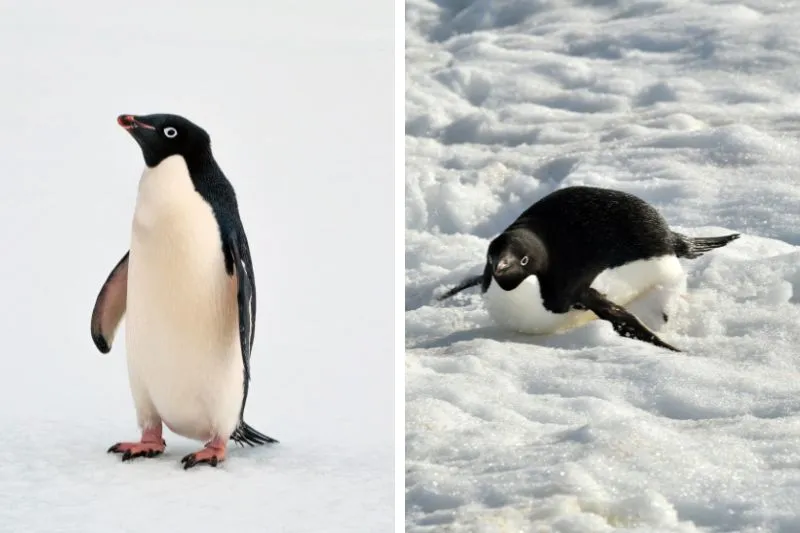
When on land, adelie penguins can either waddle around on their feet or they can slide on their bellies which is known as tobogganing. When doing this, they will use their feet to help propel themselves forward and their flippers for balance.
The benefit of tobogganing is that it’s usually faster than walking and uses up less energy. However, the snow conditions must be right. You can watch a video of them tobogganing here.


![You are currently viewing 12 Ice-Cool Facts About Adélie Penguins [#9 Will Surprise You]](https://polarguidebook.com/wp-content/uploads/2023/01/Adelie-Penguins-Jumping-Over-Ice.jpg)
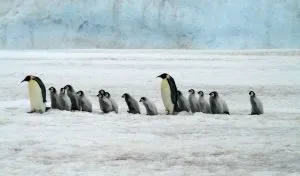
![Read more about the article 11 Facts About Snares Penguins [#6 Will Make You Want to Save Them]](https://polarguidebook.com/wp-content/uploads/2023/01/Snares-Penguin-2-300x200.jpg)
